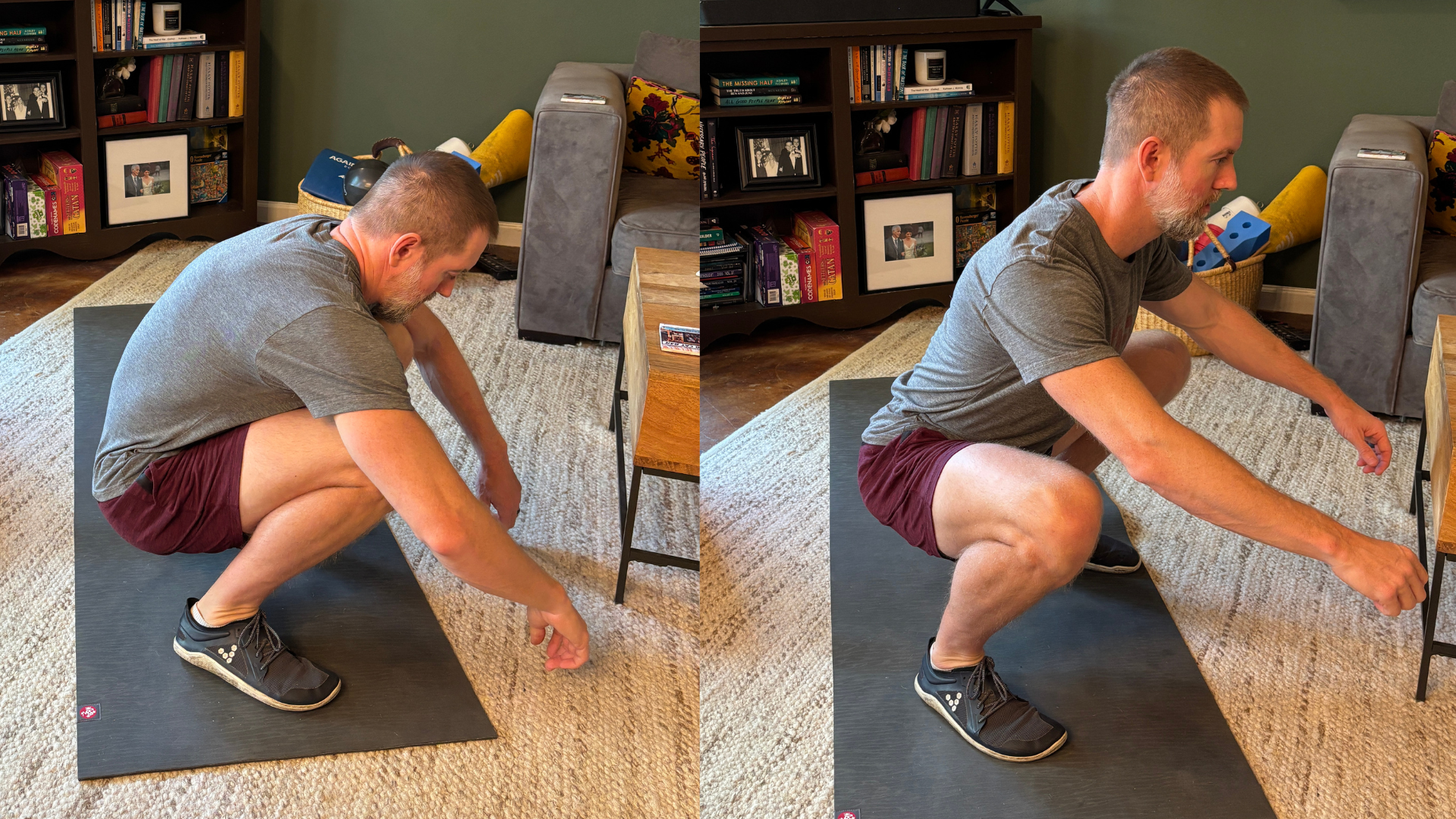Invisible Threats: How Environmental Exposures Impact Our Health
This Month’s Health Challenge
Written by Kelly Dodds - Masters in Nutrition and Human Performance
We often focus on the more visible aspects of health—diet, exercise, sleep—but what about invisible risks we face every day? From the air we breathe to the products we use, our environment exposes us to a wide range of chemicals and pollutants that can silently affect our well-being. Between 1970 to 2019, more than 87,000 chemicals have been approved for commercial use, with only around 1,000 being tested for human safety—hundreds of which are known to cause cancer or disrupt hormones. While these exposures might not always be on our minds, it’s also easy to feel overwhelmed when confronted with the amount of exposures we face daily—and think, “everything’s harmful, why should I even worry or try?” Understanding potential environmental risks around us helps us make actionable choices that can have a positive impact on our future health.
Listed below are some common toxic environmental exposures and their health risks.
Air Pollution
Air pollution remains one of the most widespread and harmful exposures we face. The World Health Organization (WHO) estimates that 99% of the global population breathes air that exceeds safe pollution limits. Fine particulate matter (PM2.5), volatile organic compounds (VOCs), nitrogen dioxide, and ozone can penetrate deep into the lungs and bloodstream.
Health Risks:
Increased risk of respiratory disease: asthma, chronic obstructive pulmonary disease (COPD), and lung cancer.
Cardiovascular diseases, including heart attacks and strokes.
Links to cognitive decline, dementia, and neurodevelopmental disorders.
Heavy Metals (Lead, Mercury, Cadmium, Arsenic)
Heavy metals persist in the environment and bioaccumulate in human tissues. Despite regulatory efforts, exposure still occurs through contaminated water, certain foods (like fish, brown rice, leafy greens, chocolate, some spices), industrial emissions, and aging infrastructure (lead pipes or paint).
Health Risks:
Lead: Cognitive deficits, behavioral disorders in children, hypertension in adults.
Mercury: Neurological impairments, especially during fetal development.
Arsenic: Skin lesions, cancer, cardiovascular disease.
Cadmium: Kidney damage, bone loss, cancer.
Endocrine Disrupting Chemicals (EDCs)
Chemicals like bisphenol A (BPA), phthalates, and per- and poly-fluoroalkyl substances (PFAS) interfere with hormone systems, even at very low doses. These chemicals are found in plastics, personal care products, non-stick cookware, and water-repellent fabrics and materials.
Health Risks:
Hormonal imbalances, thyroid dysfunction.
Fertility issues and reproductive disorders.
Increased risk of metabolic syndrome, obesity, and certain cancers.
Pesticides and Herbicides
Widely used in agriculture, pesticides such as organophosphates and herbicides like glyphosate can remain on foods or drift into water supplies.
Health Risks:
Neurotoxicity, especially in children.
Disruption of gut microbiota.
Potential carcinogenicity (glyphosate is classified as a probable human carcinogen by the International Agency for Research on Cancer).
Household Chemicals
From air fresheners and cleaning agents to flame retardants in furniture, everyday products can emit Volatile Organic Compounds (VOCs).
Health Risks:
Respiratory irritation, asthma exacerbation.
Skin allergies, endocrine (hormone) disruption.
Radon Trapped Indoors
A radioactive gas released from soil, rock, and groundwater that seeps into buildings through cracks in foundations or crawl spaces, and can accumulate to dangerous levels indoors. Even in areas with moderate/low levels, like Central Texas, homes can test well above the EPA’s action level of 4 picocuries per liter (pCi/L). The Texas Department of State Health Services reports that roughly 1 in 5 Texas homes test above the EPA’s action level of 4 pCi/L.
The second leading cause of lung cancer in the U.S. (after smoking)
Responsible for an estimated 21,000 deaths annually according to the Environmental Protection Agency (EPA).
Toxins enter our bodies primarily through inhalation (airborne pollutants), ingestion (contaminated food and water), and dermal absorption (cosmetics and cleaning products). What makes these exposures particularly harmful is their cumulative nature—small exposures repeated over time can accumulate in body tissues, leading to bioaccumulation. The combination of multiple chemicals at low doses (the “cocktail effect”) further complicates health risks, often in ways that clinical and regulatory frameworks can not fully address.
These risks are often underestimated due to the delayed onset of health effects. Many diseases linked to environmental exposures (cancer, neurodegeneration) are not immediate, but take years to manifest. Therefore, regulatory gaps exist, especially when safety testing often focuses on high-dose exposures of single chemicals, overlooking low-dose chronic exposures and chemical mixtures. Also, their invisible presence, being that these substances often lack color, taste, or smell, makes them easy to ignore.
What We Can Do: Evidence-Based Strategies to Reduce Exposures
1. Improve Indoor Air Quality
Use HEPA air filters at home, especially in bedrooms.
Ventilate indoor spaces regularly—open windows or use exhaust fans.
Avoid smoking indoors and limit the use of candles, air fresheners, and incense.
Get a radon test kit (charcoal canister) or alpha-track detector to check your home or work levels—both easy to order and use (follow EPA guidance to test the basement or first floor).
2. Purify Your Water
Use activated carbon or reverse osmosis water filters to remove contaminants like lead, arsenic, and PFAS.
Drink from glass or stainless steel containers to reduce microplastic exposure.
3. Choose Safer Food Options
Prioritize organic produce for the “Dirty Dozen” (produce with the highest pesticide residues).
Wash fruits and vegetables thoroughly.
Limit consumption of large predatory fish (shark, swordfish, tuna) to reduce mercury exposure.
Avoiding cooking fats at very high temperatures that can form carcinogenic polycyclic aromatic hydrocarbons (PAHs). Likewise, don’t heat oil higher than their listed smoke point, and don’t reuse cooking oil.
Check out Consumer Labs reports to see if brands you regularly use have been tested for heavy metals or correct labeling.
4. Opt for Non-Toxic Household Products
Use fragrance-free, eco-friendly cleaners. The Environmental Working Group (EWG) offers a comprehensive guide to safer products. Link: https://www.ewg.org/
Avoid non-stick cookware containing PFAS; choose stainless steel or cast iron instead.
5. Switch to Safer Personal Care Products
Look for products free from phthalates, parabens, and synthetic fragrances.
Use the EWG Skin Deep database to evaluate the safety of cosmetics and personal care items. Link: https://www.ewg.org/skindeep/
6. Support Your Body’s Natural Detoxification
Stay hydrated—water supports kidney and liver detox processes.
Eat a fiber-rich diet to help bind and eliminate toxins through bile excretion in the GI tract to prevent absorption and feed the microbes that promote detoxification.
Incorporate cruciferous vegetables (like broccoli, kale) that support liver detox enzymes.
Exercise regularly, embrace the heat and consider sauna use—sweating helps excrete heavy metals through the skin.
7. Avoid Harmful Plastics (Especially for Food and Drink)
Plastics are everywhere and touch almost everything we eat & drink, but not all plastics are created equal when it comes to health risks. Certain types can leach harmful chemicals like bisphenol A (BPA) or phthalates into food and beverages, especially when heated or exposed to wear and tear. The type of plastic is sometimes labeled on a container, shown as a number inside of a triangle.
Plastics to Avoid:
Plastic #3 PVC (Polyvinyl chloride): Often contains phthalates and other additives. Found in cling wraps, squeeze bottles, and some cooking oil containers.
Plastic #6 PS (Polystyrene): Common in disposable coffee cups, take-out containers, and plastic cutlery. Can leach styrene, a suspected carcinogen, especially when heated.
Plastic #7 Other (often Polycarbonate): This category includes plastics that don’t fit into other groups, commonly containing BPA. Found in reusable water bottles, food containers, and baby bottles (older models).
Safer Plastics:
Plastic #1 PET or PETE (Polyethylene terephthalate): Used in water and soda bottles. Considered safe for one-time use but can degrade over time—avoid reusing.
Plastic #2 HDPE (High-density polyethylene): Found in milk jugs, juice bottles, and some food storage containers. Generally considered a safer plastic.
Plastic #4 LDPE (Low-density polyethylene): Used in bread bags, frozen food bags, and some squeezable bottles. Considered relatively safe.
#5 PP (Polypropylene): Found in yogurt containers, straws, and microwave-safe containers. Stable and heat resistant, making it one of the safer options.
Best Practices:
Avoid heating/microwaving food in plastic containers—use glass or ceramic instead.
Don’t store acidic or fatty foods in plastic (these can increase leaching).
Replace scratched or worn plastic containers—they leach more chemicals.
Avoid putting plastic containers in the dishwasher, where heat can break them down.
Store food and drinks in glass, stainless steel, or silicone whenever possible.
Choose products labeled BPA-free, but be cautious—BPS and BPF, common substitutes, may have similar endocrine-disrupting effects.
The modern world exposes us to a range of invisible threats—but knowledge is power. By understanding where these exposures come from and making informed choices, you can significantly reduce your risk. While no one can completely avoid environmental toxins, small, consistent changes in your daily habits can lower your exposure and support long-term health. As more research emerges and public awareness grows, we can also push for stronger regulations that prioritize safety over convenience. Taking charge of your own environment is one of the most powerful steps you can take toward better health. Start small, stay consistent, and protect the only body you have.
Take Action:
1. Improve Your Air: Stop using air fresheners or scented candles, consider adding an air purifier to a room you spend the most time in, and order a free radon test kit for your home or office (https://radon.org/free-radon-test-kits/)
.2. Be Mindful of Your Plastics: Replace one plastic food or drink container with glass or stainless steel, stop microwaving food in plastic (use ceramic or glass instead), and identify and phase out any #3, #6, or #7 plastics in your kitchen
3. Detox Your Personal Care Routine: Look up 3 of your products on EWG’s Skin Deep database and swap out one or more products with a “cleaner” version (e.g., lotion, deodorant, shampoo, or face wash) (https://www.ewg.org/)
4. Put A Little Money Where Your Mouth Is: Wash fruits & veggies before cooking, identify the Dirty Dozen produce items and buy them organic if you can, research an affordable carbon or reverse osmosis water filter system, and use a refillable glass or stainless water bottle instead of plastic









